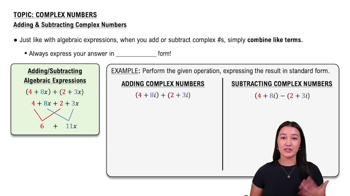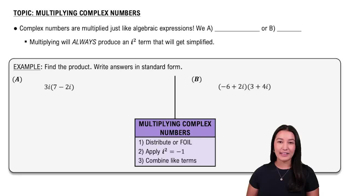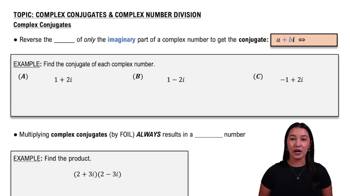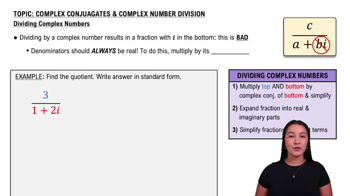Table of contents
- 0. Fundamental Concepts of Algebra3h 29m
- 1. Equations and Inequalities3h 27m
- 2. Graphs1h 43m
- 3. Functions & Graphs2h 17m
- 4. Polynomial Functions1h 54m
- 5. Rational Functions1h 23m
- 6. Exponential and Logarithmic Functions2h 28m
- 7. Measuring Angles40m
- 8. Trigonometric Functions on Right Triangles2h 5m
- 9. Unit Circle1h 19m
- 10. Graphing Trigonometric Functions1h 19m
- 11. Inverse Trigonometric Functions and Basic Trig Equations1h 41m
- 12. Trigonometric Identities 2h 34m
- 13. Non-Right Triangles1h 38m
- 14. Vectors2h 25m
- 15. Polar Equations2h 5m
- 16. Parametric Equations1h 6m
- 17. Graphing Complex Numbers1h 7m
- 18. Systems of Equations and Matrices3h 6m
- 19. Conic Sections2h 36m
- 20. Sequences, Series & Induction1h 15m
- 21. Combinatorics and Probability1h 45m
- 22. Limits & Continuity1h 49m
- 23. Intro to Derivatives & Area Under the Curve2h 9m
1. Equations and Inequalities
Complex Numbers
Struggling with Precalculus?
Join thousands of students who trust us to help them ace their exams!Watch the first videoMultiple Choice
Find the product. Express your answer in standard form. 2i(9−4i)(6+5i)
A
8+18i
B
54−20i
C
54−40i
D
−42+148i
 Verified step by step guidance
Verified step by step guidance1
First, recognize that you need to multiply three complex numbers: 2i, (9 - 4i), and (6 + 5i).
Start by multiplying the first two complex numbers: 2i and (9 - 4i). Use the distributive property: 2i * 9 + 2i * (-4i).
Calculate each term: 2i * 9 = 18i and 2i * (-4i) = -8i^2. Remember that i^2 = -1, so -8i^2 becomes 8.
Combine the results from the previous step: 18i + 8. This is the product of the first two complex numbers.
Now, multiply the result (8 + 18i) by the third complex number (6 + 5i) using the distributive property: (8 + 18i)(6 + 5i). Expand this expression and combine like terms to express the final result in standard form a + bi.

 3:31m
3:31mWatch next
Master Introduction to Complex Numbers with a bite sized video explanation from Patrick
Start learning





